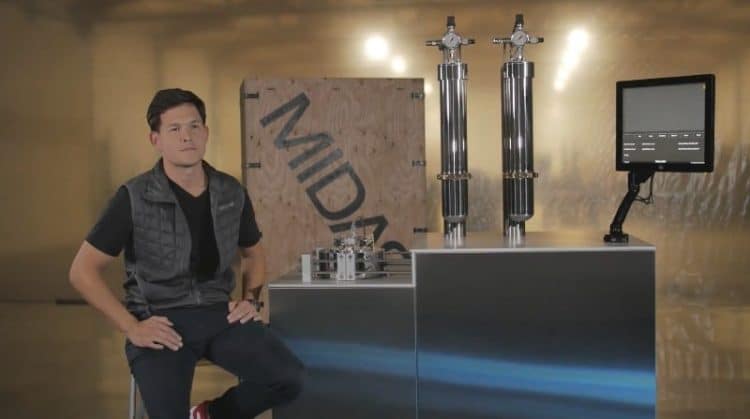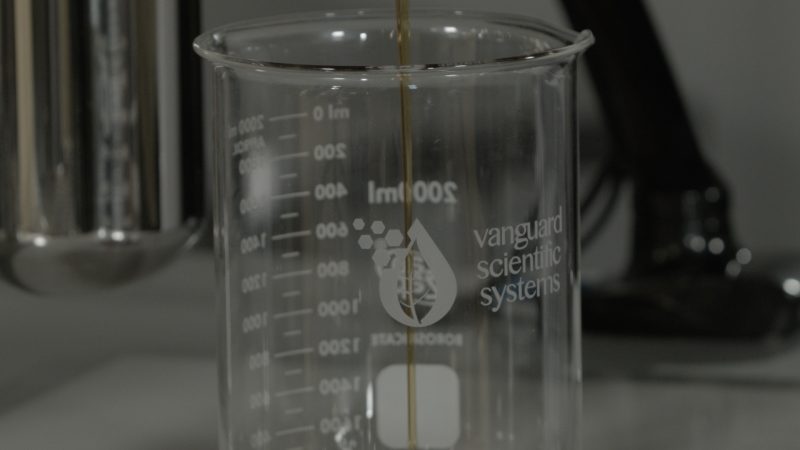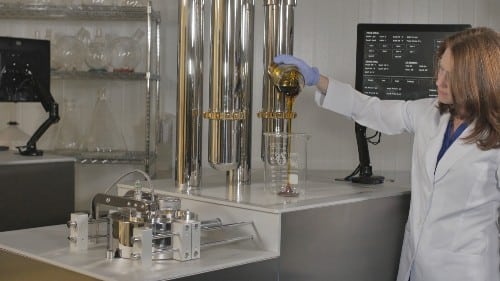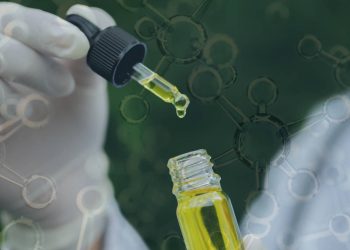Cannabis and beverage products have complex compositions that are usually the result of a carefully choreographed dance between their many ingredients. Targeting and bringing out specific molecules for their taste and/or medicinal effects is the name of both games. In that sense, the cannabis and beverage industries have lots in common and they’ve actually been melding more often in products that let you experience a bit of both worlds.
Matthew Anderson has a unique viewpoint on those intersections of and commonalities between both industries, especially when it comes to extraction. Anderson created Enlightened Grain Spirits, a nationally distributed spirits company, out of his garage when he was 22. He’s now the CEO of Vanguard Scientific, a systems and solutions provider servicing the cannabis/botanical extraction industry.
Anderson believes that the progressive path for cannabis companies, especially the ones specializing in extracts, absolutely must go through technology.
“Due to the complexity of the cannabis plant as well as the strict regulations surrounding it, technological innovations have been a “must have” for any company that hopes to expand and grow,” he says. “One of those technological advances has been made in tools for extraction.”
Quality vs Quantity?
These advances eliminate the need to choose between quality and quantity.
“One of our systems, called the MIDAS XII, takes care to stabilize temperature before applying pressure controls during the CO2 terpene extraction cycle,” Anderson explains. “Comparatively, standard CO2 terpene extraction practices only begin to manipulate the temperature after pressure controls have been added. This dated method sacrifices the most delicate monoterpenes that can be extracted.”
“Additionally, the MIDAS XII pulls on average around 60% of the plant’s total terpenes during the terpene extraction cycle. Of those 60% pulled, 98% are the most delicate, desirable, and profitable terpenes used to make ultra-premium products. When pressure is applied to the biomass first, the result is a pull garnering lower amounts of desirable terpenes, usually sesquiterpenes versus the more delicate monoterpenes.”
More on Drinks
Cannabis-infused drinks are considered by many to be the next big product, both in the cannabis and beverage worlds, and Anderson believes they’re particularly appealing to mainstream beverage companies looking to tap into the health and wellness space. “Companies like Coca-Cola, that are looking for tools to advance the extraction and post-processing of products, can look to cannabis extraction solutions,” Anderson says.
For now, the regulatory hurdles are still a major roadblock to realizing this niche’s full potential, but once it’s out of the way, “we can see it being a major market player for people who would rather crack open a [tetrahydrocannabinol] THC-infused seltzer rather than have a glass of wine.”
Knowledge Transfer
Anderson believes there’s more room for back-and-forth exchange of knowledge and practices, as well as actual crossovers between the cannabis and drink industries, especially in three categories: wines and full-spectrum oils, cocktails and terpenes, and broad-spectrum distillates and distilled spirits, which is the topic of another conversation with Anderson.
But for now, cannabis extraction has room for growth and improvement in and of itself. With cannabis extraction careers being so new, extraction courses being so scarce, and the knowledge of the sophisticated extraction equipment being so specific, there’s a unique chance for people with a passion for cannabis and the scientific prowess to channel it to climb on board, learn the ropes, and influence the course of this industry.
“Companies look for people with experience in chemistry, physics, phytobiology, and/or chemical engineering. Having previous experience with chemically extracting pure compounds allows for professionals to easily transition over,” Anderson says.
Uninformed people might think that conversations regarding cannabis are exhausted by THC and cannabidiol (CBD), but Anderson believes that these molecules represent only one chapter in cannabis history.
“The CBD craze will evolve into the minor cannabinoid craze as more education and understanding is made available. The industry will move from isolated single cannabinoid ingredients to an appreciation for full spectrum or whole plant extracts. The evolution of the narrative of the ensemble effect and the importance of the minor molecules within the plant will drive ingredient differentiation by cultivar/genetics/region.”
Why “Minor” Molecules are Not So Minor
As we are already seeing, many of those “minor molecules” can have major implications, especially from a medical standpoint, despite being so scant. In fact, Anderson believes it’s precisely this rarity that could play a factor in their value, perhaps creating an exclusive status.
“The importance of the minor molecules will provide differing levels of scarcity of certain compounds which will enable value propositions throughout the sectors of therapeutics, drugs, euphorics, pain, cosmetics, ingestibles, and food.”
Whereas the recent vaping-induced lung diseases and related deaths that brought bad press on cannabis and were even used to argue against further legalization, Anderson thinks the situation highlighted the need for legalization and the standards that come with it.
“As brands and governments struggle to fight the illicit market, having a standardized way of extraction and manufacturing across all states will solve the [vaping] problem by creating transparency into what cannabis providers are selling to consumers.”
In that sense, Anderson thinks the mainstream media missed the crux of the issue, the root cause, and instead, only meandered around its effects. “There’s been a lot of inconsistent coverage on vaping, if it’s being caused by tobacco vape pens versus cannabis, or the way it was extracted, a lack of testing, etc. But the main issue with medias is that some took legalization of cannabis as the cause of this when, in reality, a federally legal, government regulated cannabis industry could fix the issue [of a lack of standardized regulations] that is causing these counterfeit, black market products,” Anderson explains.
He thinks cannabis extraction requires the closest monitoring. “Extraction is the most important step in the processing lifecycle and companies should have strict guidelines to provide the highest quality, lab-tested oil extracts.”
Anderson believes the silver lining of the vaping concerns is that it raised consumer awareness which will respectively translate into requirements non-compliant extractors cannot adhere to, thus purging the cannabis industry of incompetent and/or crooked practitioners.
Final Conclusions
“Brands that are standing behind efficacious practices, compliant manufacturing standards, and ‘true to label’ statements of product consistency, traceability, and origin are finding greater traction and consumer adoption.
Keep an eye out for our next conversation with Matt Anderson on the intersections of cannabis, cocktails, and wine.














